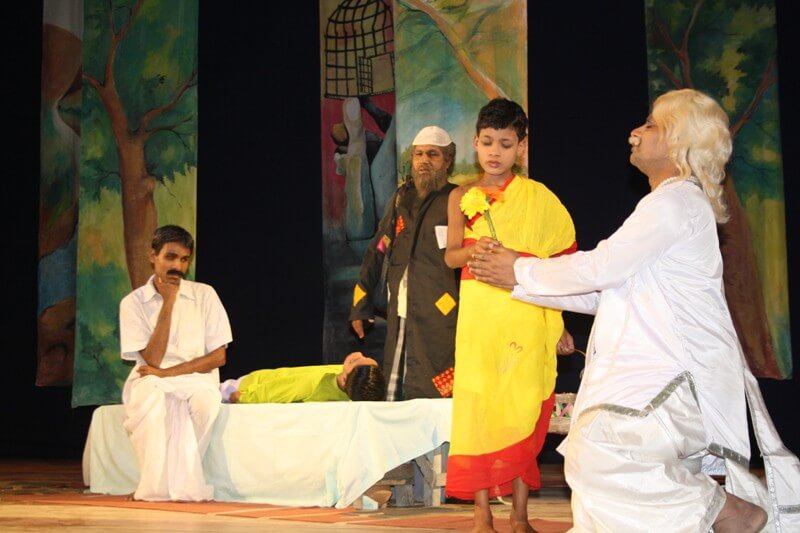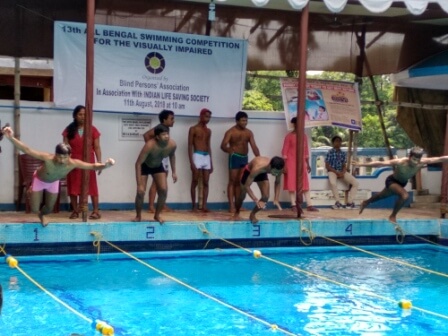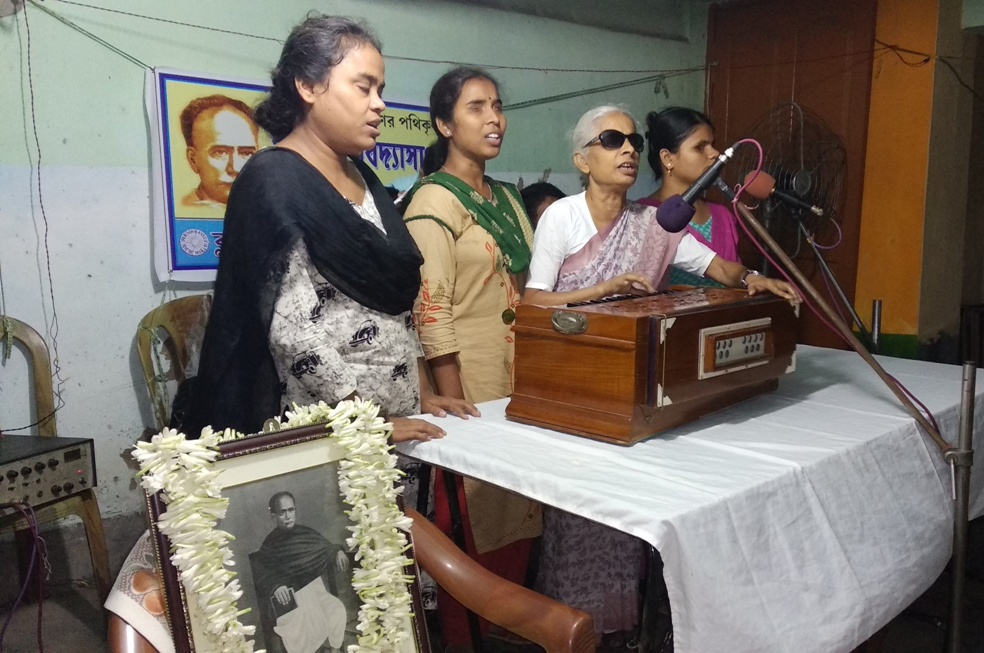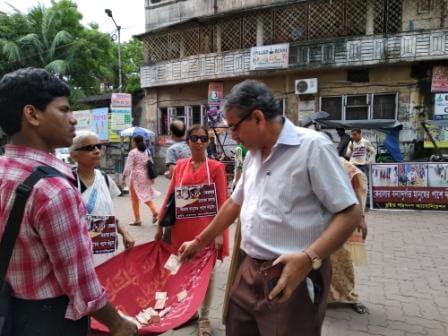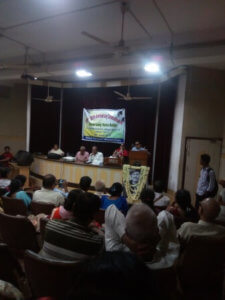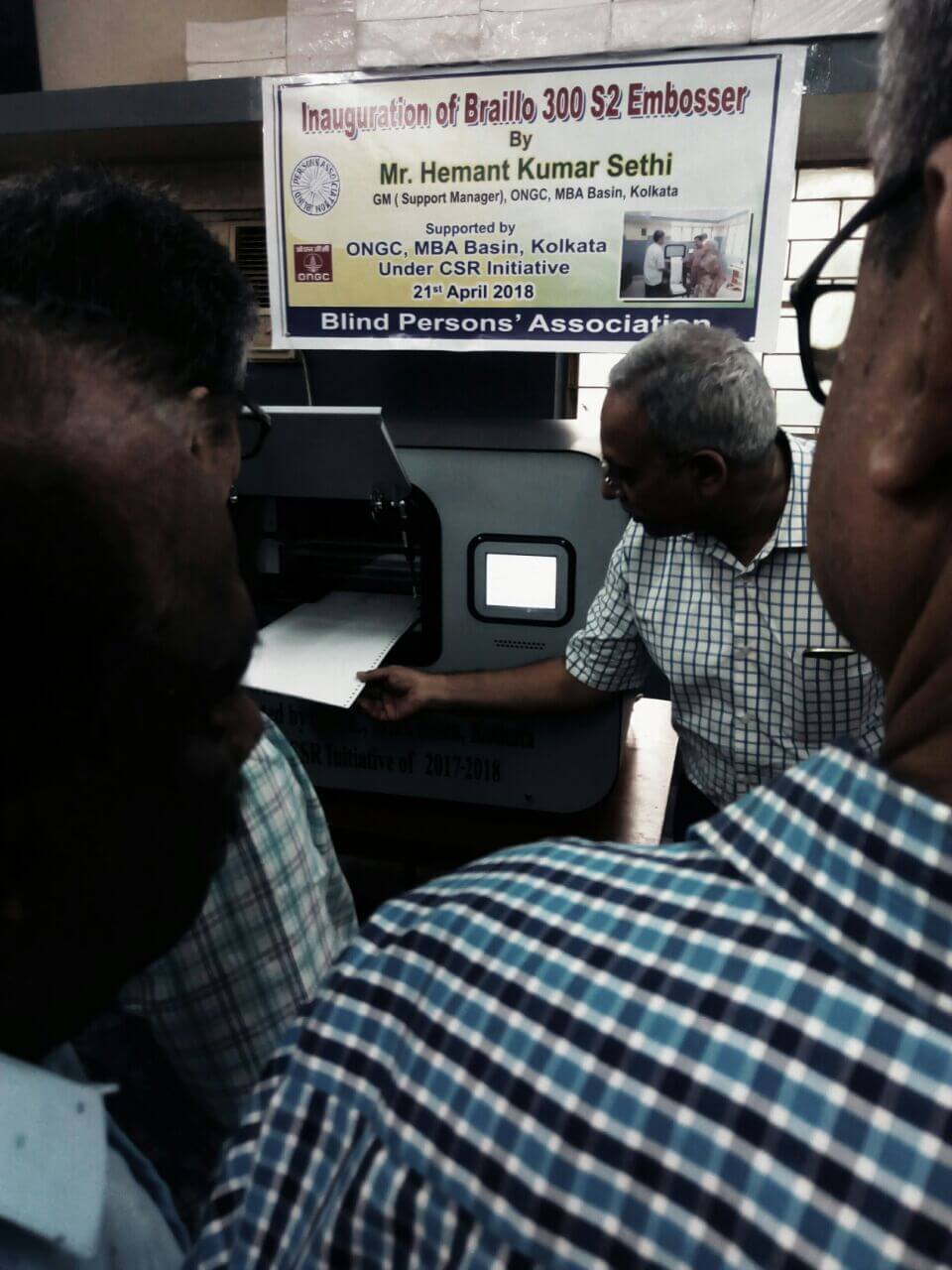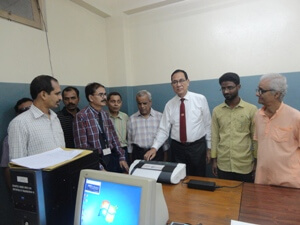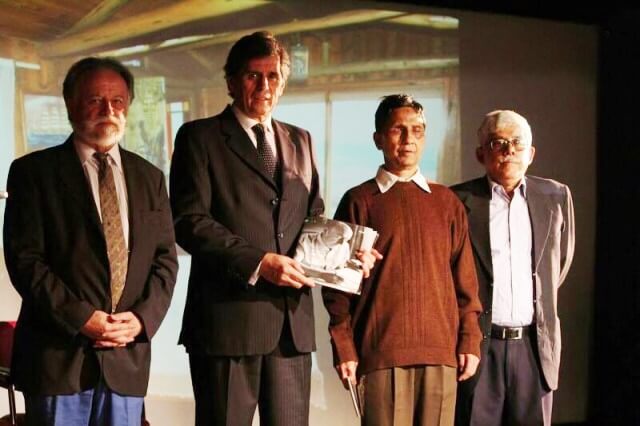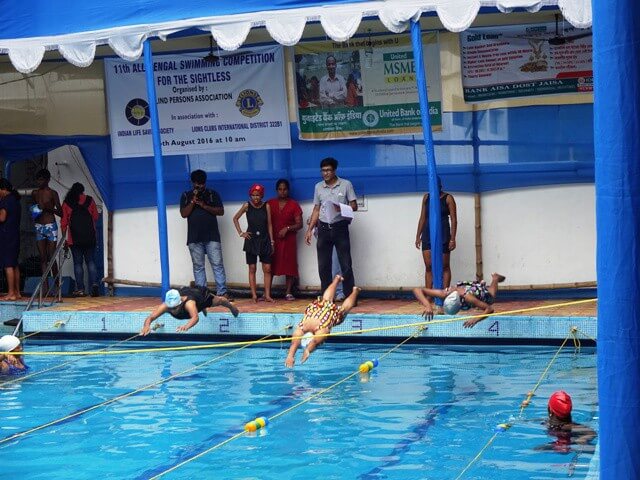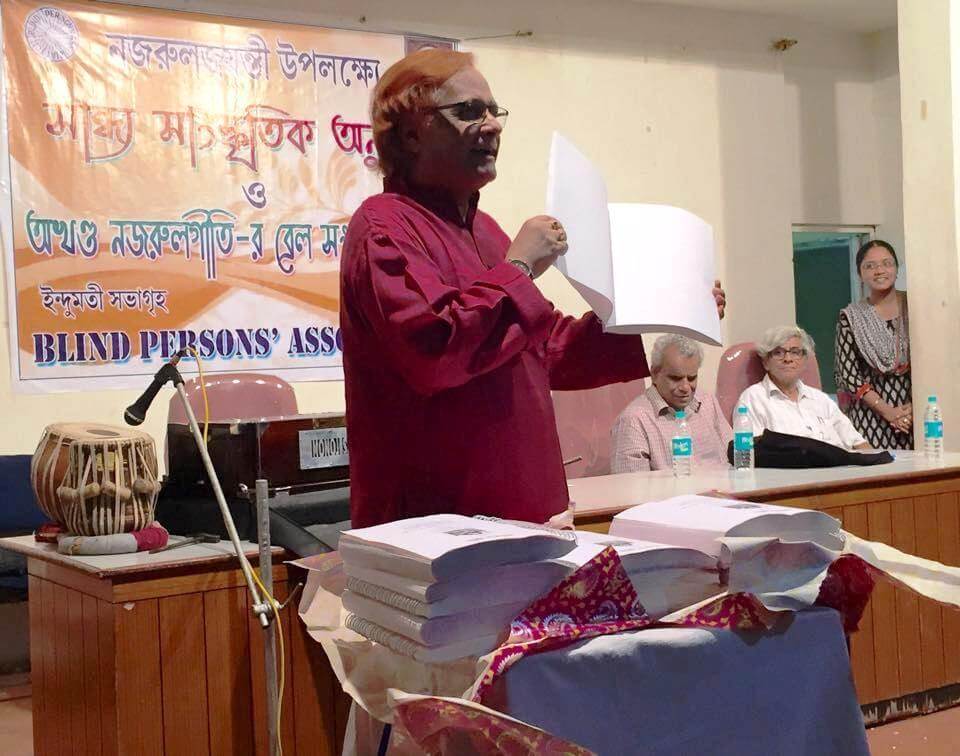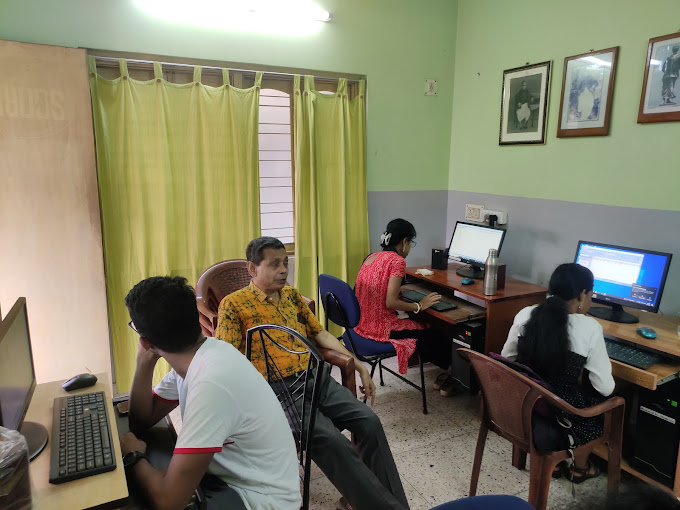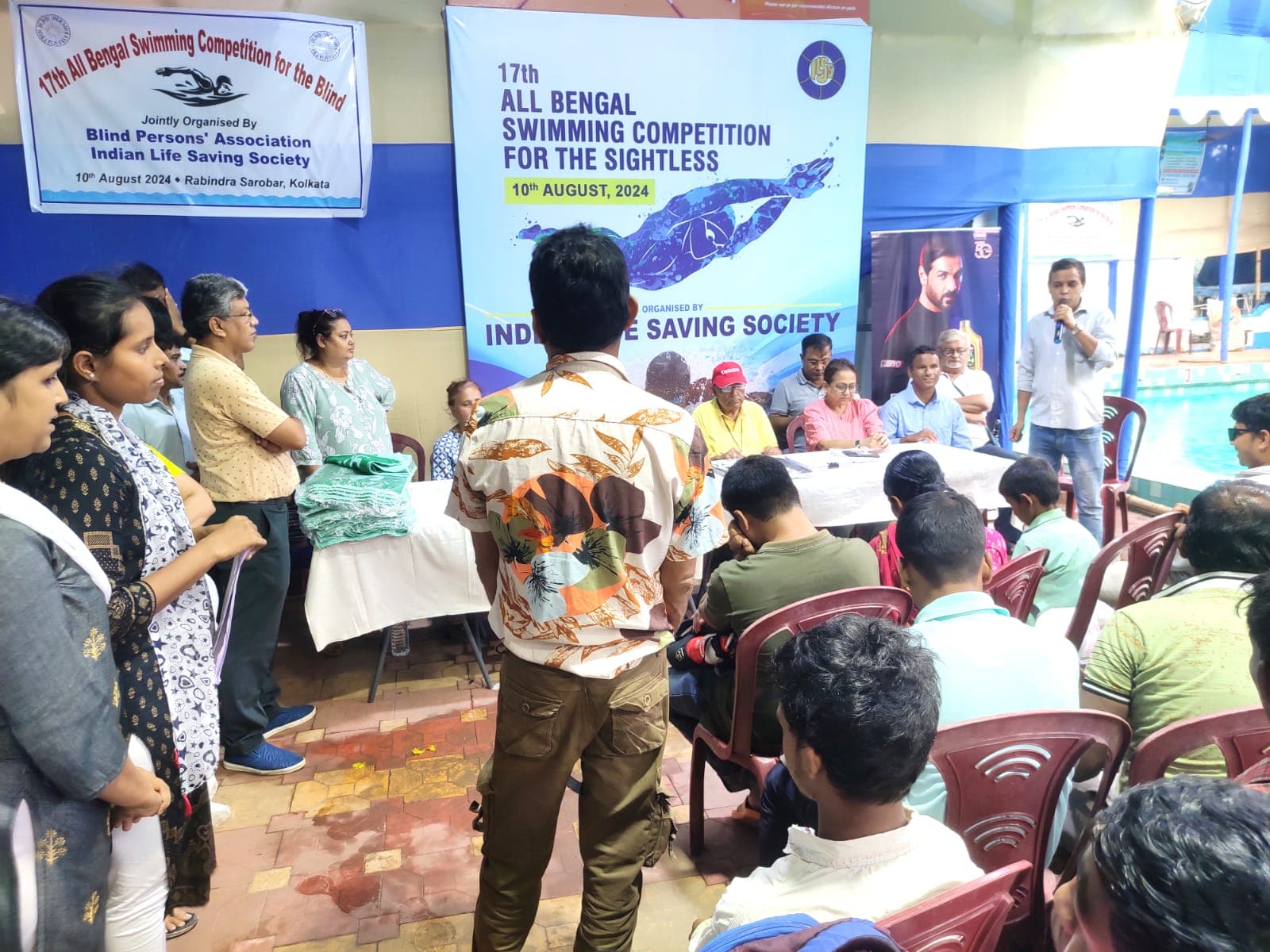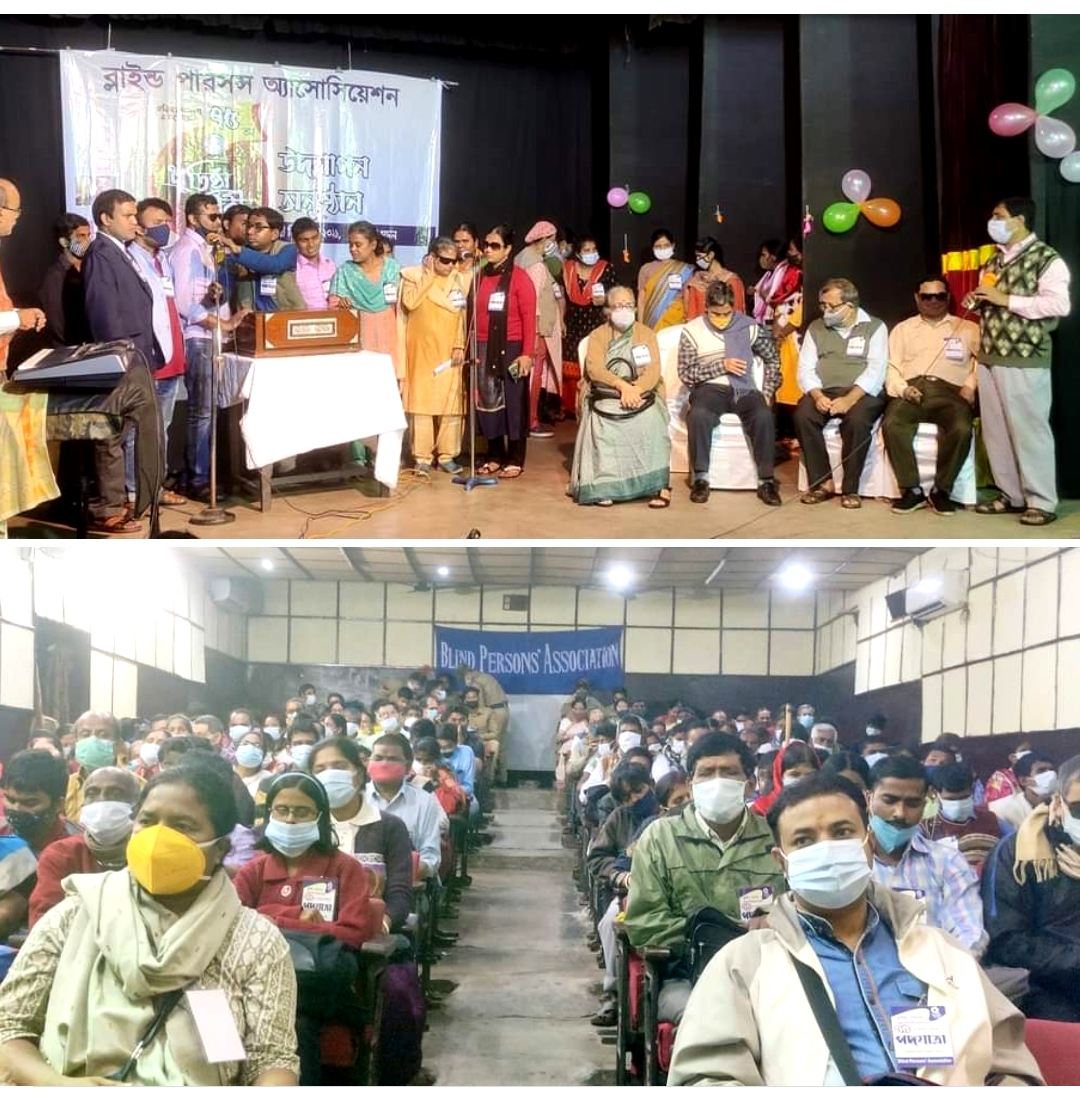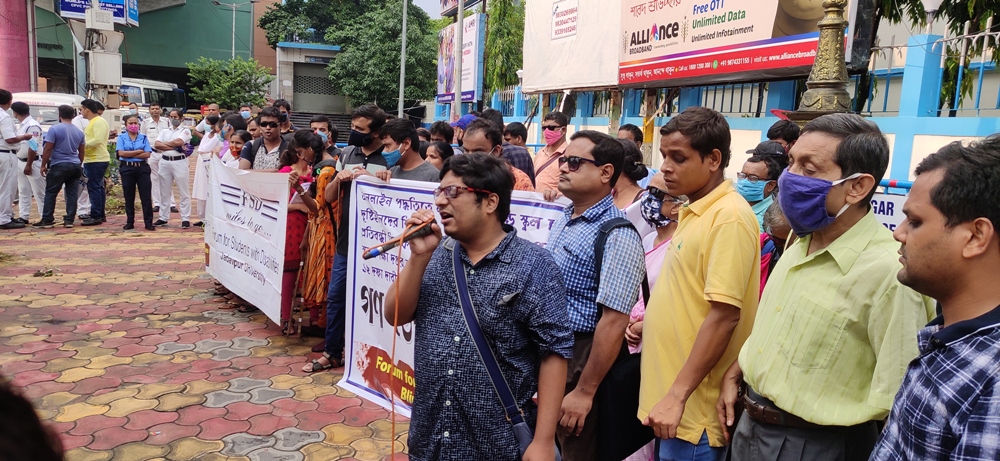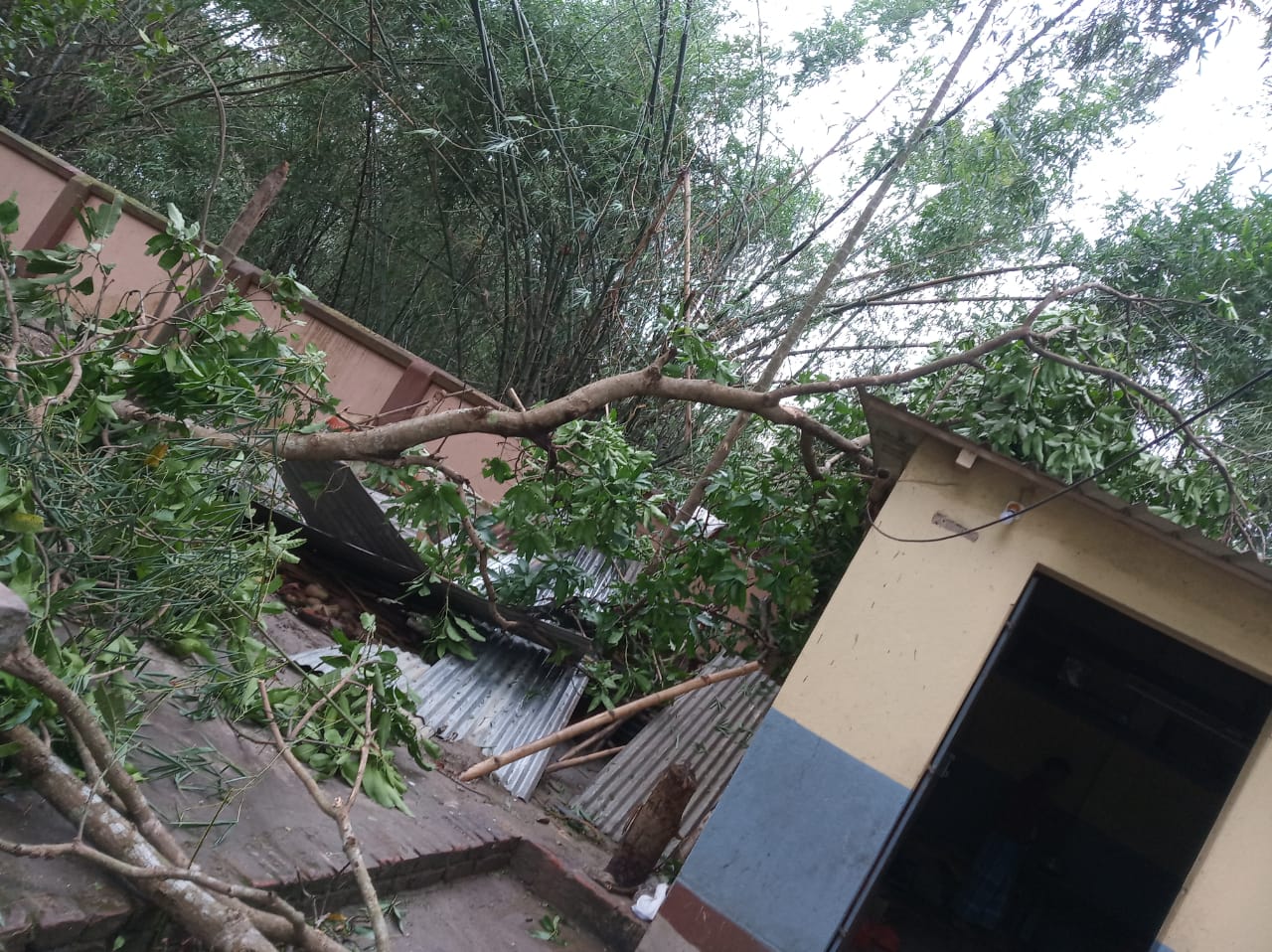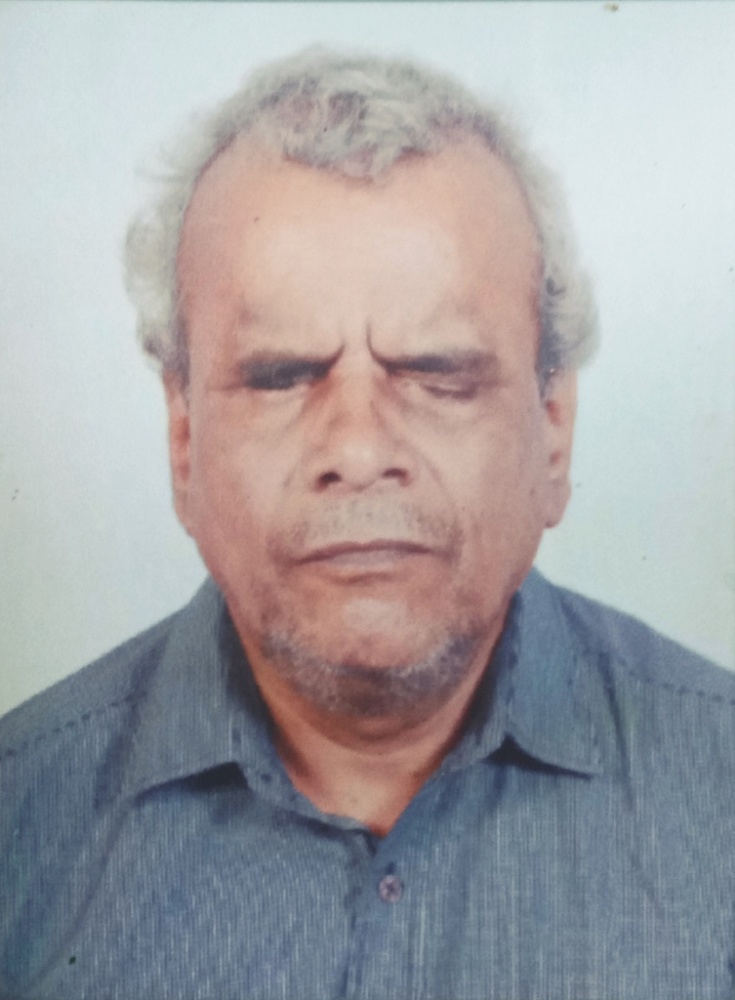Dak Ghar by Rabindranath Tagore is the story of a young boy confined to bed owing to his incurable disease. The village doctor has imposed complete restriction on his movement. His only connection with the outside world is possible through a window. He watches from his bed the curd-seller, the flower-girl, the runner and all sorts of people who travel across the landscape beyond his window. Amal, the boy, wants to know the people, where they live and how. He will visit their places and maybe he will learn their trade. “Of course, I’m dying to be about for ever so long,” Amal says.
Dak Ghar was played by the sightless students and teachers of Helen Keller Smriti Vidyamandir of Krishnanagar to mark the centenary of the play around 2010. It was first staged publicly at Krishnanagar Rabindra Bhaban on 29 December, 2010. It was also staged at visva-Bharati on 4 March, 2013. The entire credit of the performance goes to Shri Tuhin Dey, the director. He not only directed the play, he trained the actors to impersonate the characters with correct gestures. Teaching gestures to sightless children was not an easy task. The students performed it several times in Kolkata over the years. One problem of the play was the age of the actors. Students passed out of the school and the director had to train new students at least for the roles of Amal and Sudha.
Dak Ghar in itself was a unique selection. The 1912 play signified to Europe a quest for freedom from confinement during the 2nd World War. To us, Blind Persons’ Association, it is a search for light in the dark. “Let us see the light of knowledge” is the message this organisation has tried to spread. We find affinity with Amal when he says, “I’ll ask the King to find me the polar star.” Like Amal we also want to “see all the stars now twinkling from the other side of the dark”.
Thanks to Smt. Durba Bose for her short documentary on production of Dak Ghar by sightless Students. Watch her commendable work and share it with friends.
